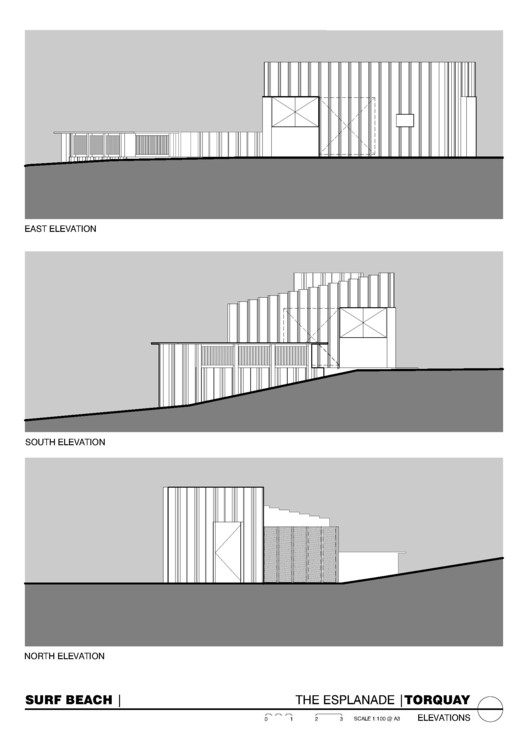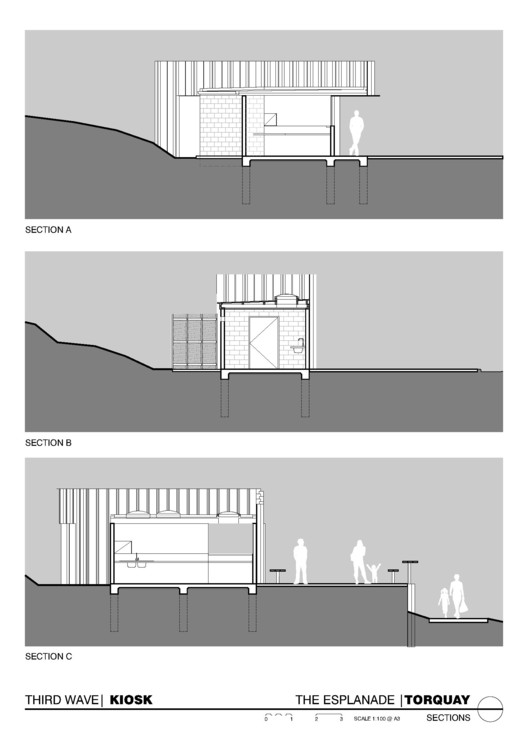
-
Architects: Tony Hobba Architects
- Area: 105 m²
- Year: 2012
-
Photographs: Rory Gardiner

Text description provided by the architects. Central to the design of the Third Wave Kiosk is reverence for its environmental setting; engagement with beach culture; resilience to natural forces and energetic youths; and attention to modest and elegant simplicity.



The brief was to design a new public facility at Torquay Surf Beach that contained a new kiosk, toilets and change rooms that would be open year round, service an assortment of recreation users and provide an important beachside destination.
Due to the site’s high level of local, regional and international use throughout the year, together with its visual prominence along this section of coastline, the design of the project recognized the need to adequately service community, recreation and tourist requirements whilst sensitively integrating and respecting the local coastal environment and adhering to the Victorian Coastal Strategy.

The building is positioned adjacent to the nexus of pedestrian circulation, between the main car park and beach access path, to guarantee maximum foot traffic; and is visible from the beach and water’s edge as it gently emerges from the primary dune.
In order to engage beach goers, an elevated lookout and alfresco seating area (65m2) has been provided adjacent to the Kiosk which not only overlooks the beach but doubles as an easily identifiable landmark and meeting point. At only 20m2, the compact kiosk kitchen and servery caters for 1-3 staff depending on seasonal demand. A 25m2 service court out the back caters for additional storage, deliveries and a few empty milk crates keenly commandeered during smoko.



The height and profile of the building has been designed to respond to the prevailing coastline undulations and windswept vegetation, and uses these natural inflections to inform its final folded appearance. The form therefore takes on a sculptural quality which blends in with the surrounding environment and shrouds the utilitarian function of the working core.

This is accentuated through its use of coastally identifiable materials and colours by using recycled sheet piles typically used for seawall, bridge and pier construction to be the predominant exoskeleton and expression of the building. These sheet piles have intentionally been left in their original condition to emphasize the reddish brown and yellow oxides of weathered steel and harmonize with the colour of the surrounding cliffs.

This system of construction proved extremely efficient, both structurally and financially, as the sheet piles were used as permanent retaining walls for the alfresco terrace and lookout; provided permanent formwork for the building slab; and extended up as the primary structure and facade of the building. It appears that this is the first building in Australia to utilise the material in such a way, with the added bonus of reducing the projects embodied energy.

With sustainability and re-use integral to the outcome, the recycled sheet piles were procured from the 2010/2011 Victorian floods where they were last used for flood protection works along the Murray River to assist in mitigating the devastating water damage experienced by the local river communities during this extreme rain event.
Originally published on March 01, 2013































